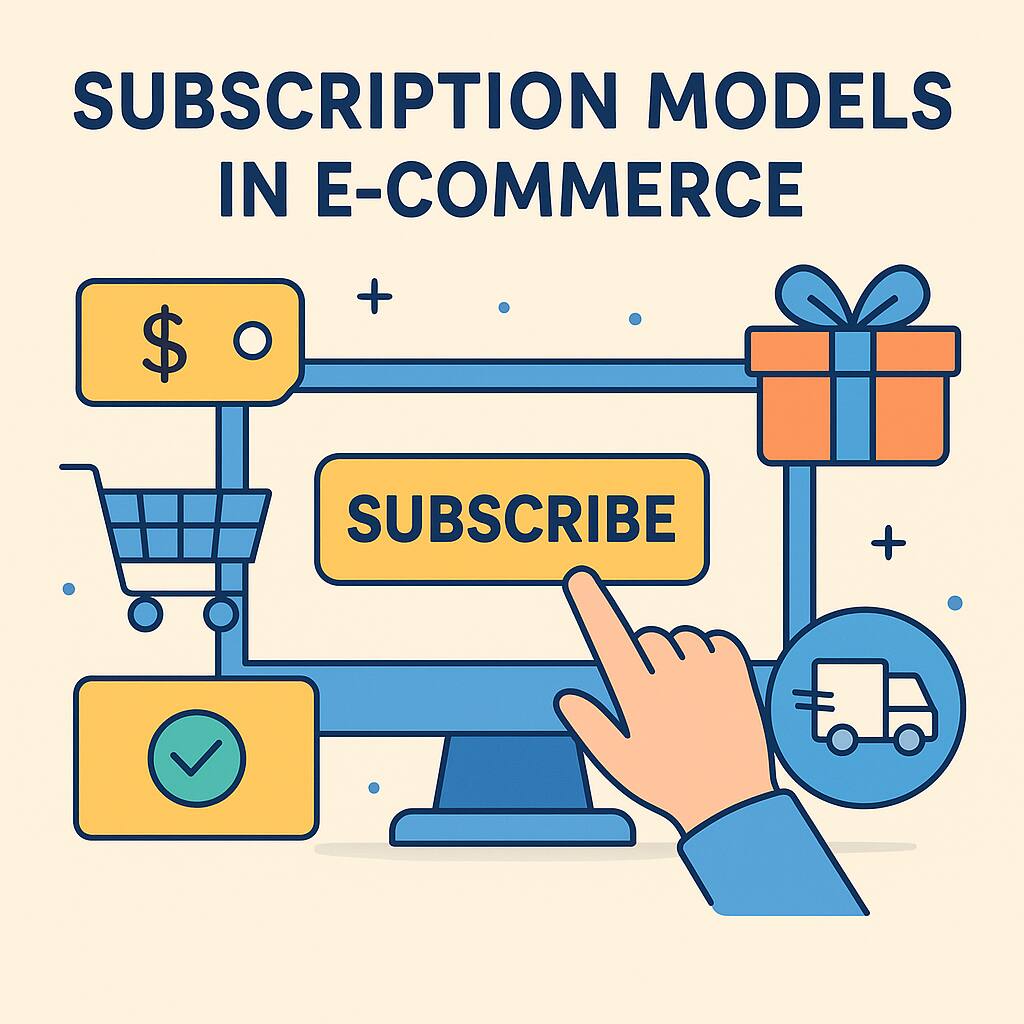In the ever-evolving landscape of online retail, subscription models in e-commerce have emerged as a powerful strategy for businesses seeking to establish predictable revenue streams, foster deeper customer relationships, and provide convenience. From curated boxes to digital services, subscriptions are reshaping how consumers interact with brands—and how brands sustain growth.
This blog dives deep into the mechanics, benefits, challenges, and future of e-commerce subscription models, offering insights for entrepreneurs, marketers and curious consumers alike.
What Are Subscription Models in E-Commerce?
A subscription model is a business strategy where customers pay a recurring fee—monthly, quarterly or annually—to access a product or service. In e-commerce, this often translates to the regular delivery of physical goods, access to digital content or exclusive member benefits.
Common Types of Subscription Models
- Replenishment Subscriptions: Automate the delivery of essential items (e.g., razors, pet food, vitamins).
- Curation Subscriptions: Offer personalized selections (e.g., fashion boxes, book clubs, gourmet snacks).
- Access Subscriptions: Provide exclusive access to content, discounts or services (e.g., Amazon Prime, streaming platforms).
Each model caters to different consumer needs and behaviors but all share the goal of creating ongoing engagement and revenue.
Why Are Subscription Models So Popular?
Several key factors drive the rise of subscription models in e-commerce:
- Convenience: Customers enjoy hassle-free shopping with automated deliveries.
- Personalization: Many subscription services tailor offerings based on preferences or usage.
- Cost Savings: Subscriptions often come with bundled discounts or perks.
- Brand Loyalty: Regular interaction fosters deeper customer relationships.
- Predictable Revenue: Businesses benefit from recurring income and better inventory planning.
In short, subscriptions offer a win-win: value for consumers and stability for businesses.

Real-World Examples of Successful Subscription Models
Let’s look at how some brands have mastered the art of e-commerce subscriptions:
- Dollar Shave Club: Revolutionized grooming with low-cost, high-quality razors delivered monthly.
- Birchbox: Pioneered curated beauty boxes, offering discovery and delight.
- HelloFresh: Simplified meal planning with weekly recipe kits tailored to dietary needs.
- Netflix: Though digital, it’s a prime example of access-based subscriptions dominating entertainment.
These companies didn’t just sell products—they sold experiences, convenience and trust.
How to Implement a Subscription Model in Your E-Commerce Business
Thinking of launching a subscription model? Here’s a roadmap:
1. Identify Your Value Proposition
Ask: What recurring need does your product fulfill? Is it convenience, discovery or exclusivity?
2. Choose the Right Subscription Type
Decide between replenishment, curation, or access based on your product and audience.
3. Set Pricing Strategically
Balance affordability with profitability. Consider offering tiered plans to cater to different budgets.
4. Invest in Seamless Technology
Use platforms that support recurring billing, customer management and analytics. Shopify, WooCommerce and Recharge are popular options.
5. Focus on Customer Experience
From onboarding to delivery, ensure every touchpoint is smooth and engaging. Personalization and communication are key.
6. Monitor Metrics Religiously
Track churn rate, lifetime value (LTV), acquisition cost (CAC) and engagement. These metrics reveal the health of your subscription business.
Challenges of Subscription Models
While enticing, subscription models in e-commerce aren’t without hurdles:
- Churn: Customers may cancel due to a lack of value or changing needs.
- Logistics: Managing inventory and timely delivery can be complex.
- Customer Fatigue: Too many subscriptions can overwhelm users.
- Retention: Keeping subscribers engaged requires ongoing effort.
Successful brands tackle these challenges with data-driven strategies, flexible plans and constant innovation.
The Role of Personalization and AI
Modern subscription models are increasingly relying on AI and personalization to enhance the customer experience. Algorithms analyze behavior, preferences, and feedback to tailor offerings—whether it’s selecting the next book in a series or adjusting a skincare routine.
This not only boosts satisfaction but also reduces churn and increases LTV.
SEO Benefits of Subscription Models
From an SEO perspective, subscription models in e-commerce offer several advantages:
- Recurring Traffic: Subscribers often revisit the site for updates, tracking, or account management.
- Content Opportunities: Blogs, reviews, and how-to guides related to subscription products improve visibility.
- User-Generated Content: Reviews and social shares enhance credibility and search rankings.
- Lower Bounce Rates: Engaged subscribers spend more time on the site, improving SEO metrics.
When paired with innovative content strategies, subscriptions can be a powerful SEO asset.
Future Trends in E-Commerce Subscriptions
The future of subscription models in e-commerce is bright—and evolving. Here are some trends to watch:
- Flexible Subscriptions: Pause, skip, or customize deliveries to suit changing lifestyles.
- Sustainability Focus: Eco-friendly packaging and ethical sourcing are becoming standard.
- Bundled Services: Combining physical and digital offerings (e.g., fitness gear + app access).
- Community Building: Exclusive forums, events, or content for subscribers to foster belonging.
As consumer expectations shift, adaptability will be key to staying relevant.
Final Thoughts
Subscription models in e-commerce are more than a trend—they’re a transformation. They offer businesses a way to build deeper relationships, stabilize revenue, and stand out in a crowded market. But success requires more than just recurring billing. It demands thoughtful strategy, customer-centric design, and continuous evolution.
Whether you’re a startup exploring new revenue streams or an established brand seeking growth, subscriptions could be your next big move.
FAQ: Subscription Models in E-Commerce
Q1: What is a subscription model in e-commerce?
A subscription model is a business strategy where customers pay regularly to receive products or services, often with added convenience or personalization.
Q2: Which industries benefit most from subscription models?
Beauty, food, fashion, wellness and digital content are among the top industries leveraging subscriptions successfully.
Q3: How do I reduce churn in my subscription business?
Focus on personalization, clear communication, flexible options and consistent value delivery to keep customers engaged.
Q4: Are subscription models profitable?
Yes, when managed well. They offer predictable revenue and higher customer lifetime value but require careful planning and retention strategies.
Q5: Can small businesses use subscription models?
Absolutely. With the right tools and niche focus, even small brands can thrive using subscriptions.

